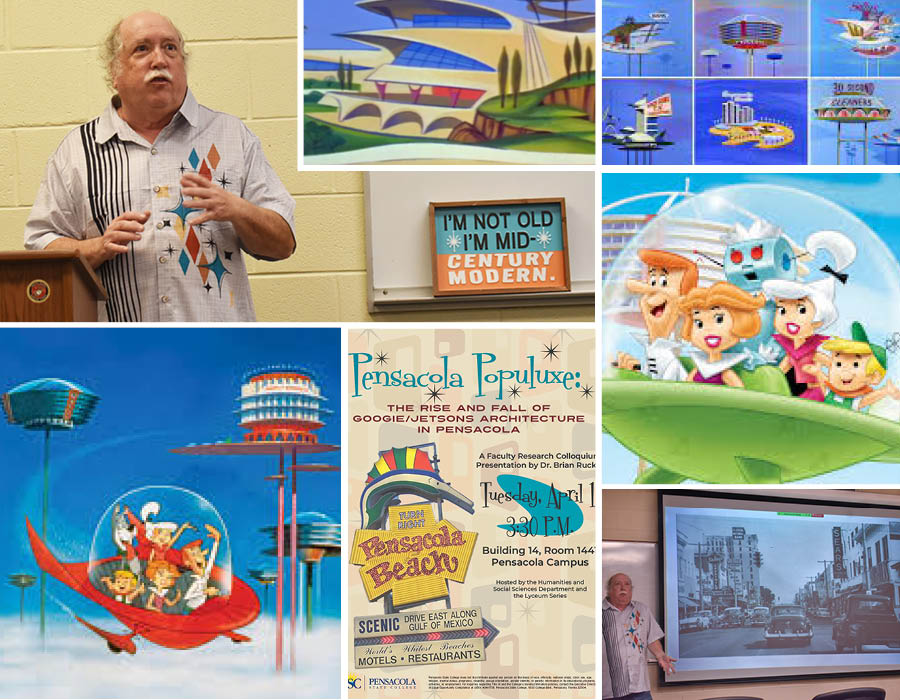 For those who grew up in the 1950s and 60s, the iconic cartoon The Jetsons, which debuted in 1962, painted a vivid picture of the future. Set in 2026, the show’s catchy lyrics – “Meet George Jetson, his boy Elroy, daughter Judy, Jane – his wife…” – transported kids to a world of flying cars, robots, and sky-high glass houses. This futuristic aesthetic, known as Populuxe, defined consumer culture and design trends in mid-century America.
For those who grew up in the 1950s and 60s, the iconic cartoon The Jetsons, which debuted in 1962, painted a vivid picture of the future. Set in 2026, the show’s catchy lyrics – “Meet George Jetson, his boy Elroy, daughter Judy, Jane – his wife…” – transported kids to a world of flying cars, robots, and sky-high glass houses. This futuristic aesthetic, known as Populuxe, defined consumer culture and design trends in mid-century America.
Dr. Brian Rucker, Professor in the Humanities and Social Sciences Department at PSC, captivated his audience on April 1 with his presentation “Pensacola Populuxe: the Rise and Fall of Googie/Jetsons Architecture in Pensacola.” He discussed how this distinctive architectural style, reminiscent of the Space Needle in Seattle or the Howard Johnson’s hotel in the popular TV series Mad Men, shaped Pensacola’s landscape.
During his presentation, Dr. Rucker shared photographs of Pensacola that he collected or took himself over the past 20 years. These images offered a visual tour through time, highlighting architectural features emblematic of Googie/Jetsons design – bold geometric and freeform shapes like boomerangs and starburst designs, cantilevered rooflines, expansive windows and vibrant colors.
The style’s aesthetic embraced optimism and innovation, capturing the spirit of the Space Age and Atomic Era. Rucker pointed out that many of Pensacola’s Populuxe landmarks have been lost to redevelopment, reflecting a broader pattern of architectural change across the country.
Rucker quoted architectural critic Alan Hess, sharing, “It is an unfortunate cycle in historic preservation that older architectural styles are only appreciated when they have been out of fashion for a while, and most of the best examples have been demolished.”
Audience members engaged in thoughtful discussions about the cultural influences that shaped the era’s architecture and how historical events may have impacted design choices. They also explored the mindsets and aspirations of the post-war period, reflecting on how prosperity and technological optimism fueled the Populuxe aesthetic.
Rucker also offered a nostalgic reflection on Pensacola’s lost landmarks, saying, “There are still shadows of a Pensacola of long ago—where McGuire’s Irish Pub used to be the old Firehouse restaurant, or you went to Martine’s in the circle for Kentucky Fried Chicken, and Gayfers in Town and Country Plaza was as good as shopping got. These are the relics of a past Populuxe.”
By bridging history and culture, Dr. Rucker’s presentation offered a fascinating glimpse into the rise and fall of Jetsons architecture in Pensacola, reminding us that the city’s evolving landscape still holds echoes of its futuristic past.

 PirateQ
PirateQ 